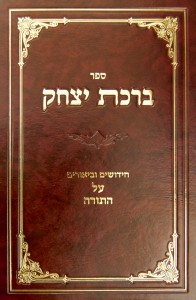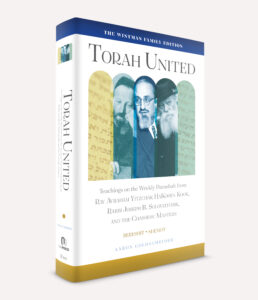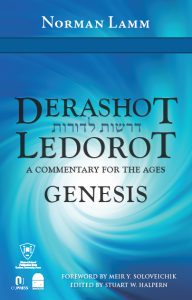Excerpted from Rabbi Shmuel Goldin’s Unlocking the Torah Text – Shmot, co-published by OU Press and Gefen Publishers
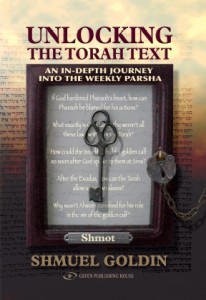 The Mystery of Moshe’s Father-in-Law
The Mystery of Moshe’s Father-in-Law
Context
Upon hearing of the Israelites’ successful Exodus from Egypt, Moshe’s father-in-law, Yitro, gathers Moshe’s wife and children and journeys to the Israelite encampment near Mount Sinai. After a mutually respectful reunion with his son-in-law and a celebratory meal including Aharon and the elders, Yitro counsels Moshe concerning the governance of the people. Moshe accepts his father-in-law’s suggestions and the Torah then records: “And Moshe released his father-in-law
and he [Yitro] returned to his land [Midian].”
Yitro, thus, apparently departs before Matan Torah (the Revelation at Sinai) even begins.
Many chapters later in the text, however, Yitro suddenly reappears in the Israelite camp. In the book of Bamidbar (Parshat Beha’alotcha), after Revelation, as the nation begins its momentous journey away from Mount Sinai, the Torah abruptly interrupts the narrative to record the following conversation between Moshe and his father-in-law:
Moshe: “We are journeying to the place in which God has said ‘I will give it to you.’ Go with us and we will treat you well, for the Lord has spoken of good for Israel.”
Yitro: “I will not go, for only to my land and to my birthplace shall I go.”
Moshe: “Please do not leave us, for you know our encampmentsin the wilderness and you shall be as eyes for us. And it shall be if you come with us, and the good that God will bestow upon us, we will bestow upon you.”
There, the conversation ends. Yitro does not openly appear again in the Torah text.
Questions
Did Yitro end his first visit to the Israelites by returning to Midian before Revelation? If so, why does the text inexplicably record his presence, chapters later, as the Israelites prepare to depart from Sinai? If he never left in the first place, why does the Torah state in Parshat Yitro, “And Moshe released his father-in-law and he returned to his land”?
What was the final outcome of the conversation between Moshe and Yitro in the book of Bamidbar? The Torah records no conclusion. Does Yitro ultimately return to Midian or does he join his son-in-law’s people in their historic journey from Sinai after Revelation?
On an even more basic level, why does the Torah bother to record the visit(s) of Yitro to the Israelite encampment at all, particularly as bookends to Revelation, the formative event of Jewish history? Of what lasting importance is Yitro’s ultimate decision? Why should we care whether or not one additional individual joins the Israelites in their journey? And if Yitro’s fate is so important, why isn’t the text clear concerning his final decision?
Approaches
-A-
Faced with the puzzling textual information concerning Yitro’s appearance(s) at Sinai, the early scholars take a step back and raise a related, yet even more basic, issue: Why did Yitro journey to the Israelite encampment in the first place?
Among the suggestions they offer are two possibilities recorded in the Talmud, based on the verse “And Yitro, the priest of Midian, the father-in- law of Moshe, heard all that God had done for Moshe and Israel his nation…”
What did Yitro hear? “Rabbi Yehoshua maintains that he heard the news of the battle with Amalek…. Rabbi Eliezer Hamoda’i argues that he heard the news of Revelation.”
The Talmud goes on to explain that the debate between Rabbi Yehoshua and Rabbi Eliezer concerning Yitro’s motivations hinges upon a fundamental disagreement over the timing of his visit to the Israelite encampment. Rabbi Yehoshua, in consonance with the flow of the text before us, maintains that Moshe’s father-in-law arrives prior to Revelation. Rabbi Eliezer, on the other hand, evidence of the text notwithstanding, claims that Yitro does not arrive until after the Torah is given. Only upon hearing of that momentous event, argues Rabbi Eliezer, does Yitro journey to
his son-in-law’s people.
Central to Rabbi Eliezer’s position is a well-known yet often misunderstood rule of traditional Torah study: Ein mukdam u’me’uchar ba’Torah – the text does not necessarily follow chronological order. Thus, even though the Torah records Yitro’s appearance as occurring before Matan Torah, he does not actually arrive until after Revelation is complete.
This rule is invoked sparingly by the scholars only when they feel that the events in the text cannot be understood in the sequence in which they unfold. Everyone agrees that, on the whole, the Torah does follow chronological order in its description of events.
-B-
Centuries later, in their struggle to explain Yitro’s sudden reappearance in the book of Bamidbar, the commentaries base their approaches upon the dispute between Rabbi Yehoshua and Rabbi Eliezer.
The Ibn Ezra, for example, maintains that Rabbi Eliezer is correct: Yitro does not arrive until after Revelation. The record of Yitro’s visit prior to Revelation is temporally out of place. Furthermore, although the Torah records two conversations concerning Yitro’s future plans (one before Revelation and one after), only one conversation actually takes place. The Torah simply refers to that conversation twice.
After listing a series of proofs to bolster his position, the Ibn Ezra addresses the obvious question: if Yitro arrives only after Revelation, why does the Torah chronicle his visit in detail in Parshat Yitro before Matan Torah even begins? The Ibn Ezra postulates that the Torah wants to create a distinction between Yitro’s visit and the attack of the nation of Amalek, recorded at the end of the previous parsha, Beshalach. Yitro’s commendable behavior towards the Israelites is to be seen in stark contrast to the unprovoked hostility of the Amalekites.
In this way, at the dawn of Jewish history, the Torah demonstrates that the approach of normative Judaism to the non-Jewish world is far from monolithic. While those, like Amalek, who perpetuate evil are to be resisted in implacable fashion, “Righteous Gentiles” such as Yitro are to be treated with respect and honor.
Centuries later, this distinction between Yitro and Amalek is again clearly drawn as the fate of their progeny is determined. When Shaul, the first king of Israel, prepares to wage war against the Amalekites, he warns the descendents of Yitro to evacuate Amalekite territory and escape the looming conflagration.
-C-
After lengthy discussion, the Ramban ultimately disagrees with the two basic arguments of the Ibn Ezra and arrives at a conclusion that preserves the flow of the Torah text from Parshat Yitro to Parshat Beha’alotcha.
Yitro, he argues, arrives at the wilderness of Sinai before Revelation, as indicated in the text and as maintained by Rabbi Yehoshua. The two conversations between Moshe and Yitro recorded in the text, he continues, both occur. Yitro discusses his plans with Moshe before Revelation, returns to Midian, subsequently rejoins Moshe at Sinai after Revelation and the second conversation takes place.
-D-
Finally, the Abravanel presents a third option, agreeing with the Ramban on one point and with the Ibn Ezra on the other. Like the Ramban, the Abravanel maintains that Yitro arrives before Revelation. He claims, however, that Moshe’s father-in-law then remains with the Israelites for two years, sharing in the experience of Matan Torah. Only one conversation takes place between Moshe and Yitro concerning Yitro’s future plans. Agreeing with the Ibn Ezra, the Abravanel believes that this dialogue occurs after Revelation but is also briefly referenced in Parshat Yitro, two years before it occurs.
-E-
If the authorities disagree concerning Yitro’s arrival at Sinai, even greater debate surrounds the mystery of his ultimate fate.
Some scholars maintain that Moshe’s father-in-law returns to his homeland for practical reasons. The Sforno, for example, suggests that Yitro believed that he could not, at his advanced age, tolerate the environment of a new land. Moshe was successful, however, in convincing his father-in-law’s descendents to join the Israelites’ historic journey.
The Sifrei quotes Yitro as offering arguments which in the centuries to follow will often be raised by those choosing to live in the diaspora: I will not join you because of my familial obligations and because of my material success outside the land.
-F-
Other sages, while agreeing that Yitro returns to Midian, attribute higher motives to his decision.
An early source, none other than Rabbi Eliezer Hamoda’i, the Tannaitic scholar who weighed in concerning Yitro’s arrival (see above), maintains that Moshe’s father-in-law offers the following rationale: What good can I possibly do, Moshe, if I join you on this journey? A candle only makes a difference where it is dark. You, Moshe, are like the sun while Aharon is like the moon. In the face of your illumination, I, a mere candle, will have no effect at all. I will therefore return home, to Midian, where I will convert the members of my family, bringing them under the cover of the wings of the Almighty.
-G-
Virtually alone among classical commentaries, the Ramban demurs and maintains that Yitro actually decides to join the Israelites upon their departure from Sinai. As indicated above, the Ramban adheres to the pshat of the text in maintaining that Yitro actually visited Sinai on two occasions, once before and once after Revelation. After the first of these visits Moshe’s father-in-law returned to Midian. After the second visit, however, Moshe successfully convinces Yitro to remain and to throw his lot in with the fledgling Jewish nation.
-H-
Regardless of the positions we adopt concerning Yitro’s visits, motives and final decision, the fundamental questions remain: Why does the Torah bother to record these events at all, particularly as bookends to Matan Torah, the formative event of Jewish history? Of what significance is the possible decision of one more individual to join the Israelites’ journey? And, if Yitro’s fate is so important, why isn’t the Torah clear concerning his final decision?
Answers to these questions may well lie in two basic truths concerning Revelation which will be discussed in greater depth elsewhere (see Ki Tissa 5, Approaches A2).
1. Revelation is not a one-time event but an ongoing phenomenon. The Torah is received anew in each generation through study, observance and halachic application.
2. Revelation unfolds not only in communal but in individual, personal terms. At the foot of Mount Sinai, each individual struggled with his own commitment to God’s newly given law. Similarly, in each generation, as the Jewish nation renews its commitment to Torah, every individual struggles to determine his or her relationship with that law.
Suddenly, the Torah’s intent becomes clear.
The text chooses Yitro, the one individual present at Sinai whose relationship to Revelation most clearly mirrors our own across the ages – an “outsider” who did not personally witness the miracles of the Exodus, the parting of the Reed Sea, the defeat of Amalek; a “latecomer” whose information concerning God’s Revelation is (at least according to most authorities) heard rather than seen.
The text then brackets the narrative of national Revelation with the account of Yitro’s individual, internal struggle as he decides whether to accept or to reject the laws given at Sinai, to affiliate with the Israelites as they begin their journey or to return to the known comforts of home.
Through this focus on Yitro, the Torah foreshadows the personal struggle of each Jew in every generation.
Distant from Sinai, we, too, must decide whether or not to heed Matan Torah’s eternal call; we must determine to what extent we will truly be part of our people’s ongoing journey from Revelation to the end of days.
Yitro’s choice remains open in the text to indicate that for each of us, regardless of our background, our place in our people’s saga is not a foregone conclusion. There are no assurances, no inherited certainties. Like Yitro, we face overwhelming choices as we map out our spiritual paths. Concerning our place in the journey of our people, the jury is out until we decide; and the process of deciding courses through our entire lives.
Points to Ponder
If the story of Moshe’s father-in-law reflects the universal struggle of all Jews for philosophical self-definition, it also validates the spiritual journey of one specific subset within our community: converts to Judaism.
Great misunderstanding abounds concerning the attitude of Judaism towards conversion. The traditional Jewish community’s apparent reluctance to accept potential converts is often interpreted as negativity towards conversion and converts themselves. Nothing could be further from the truth. Our approach towards potential converts actually mirrors our fundamental belief in the inherent potential value of all human beings, Jew and non-Jew alike (see Bereishit: Noach 4). We hesitate to convert others to Judaism simply because we believe that those outside of our faith tradition are under no obligation to be like us. We do not maintain that an individual must worship as we do, nor do we contend that only our path will afford “redemption.”
We therefore work mightily to ascertain that an individual wishing to convert:
1. Fully understands why he is doing so
2. Recognizes that, from our perspective, he is not required to convert
3. Spends time in serious study and comes to realize exactly what his decision to convert will entail
In short, we insist that a potential convert reflect knowledge and commitment.
If over time and through a serious course of study, an individual demonstrates a true desire to convert and a commitment to Jewish law and practice, we are obligated to accept him fully.
Numerous sources within our tradition reflect the high regard in which righteous converts are held.
For example:
1. A specific mitzva is found in the Torah instructing us to “love the convert.” This commandment exists over and above the general edict “Love for your friend as for yourself,” which also applies to converts.
2. God Himself is described in the Torah as One Who “loves the convert, providing him with bread and garment.”
3. Conversion features prominently at pivotal moments in our nation’s history through the contributions of important figures such as Yitro and Ruth.
4. We beseech God in our daily prayers to judge us favorably in the merit of our nation’s righteous individuals, including the geirei tzedek (righteous converts).
5. Most significantly, as noted before (see Bereishit: Vayeishev 4, Approaches B), the laws of conversion themselves are derived by the steps taken by the Israelites and those who stand with them at Sinai, before and during Revelation. We are, in a real sense, a nation of converts, our Jewish identity determined by our ancestors’ acceptance of Torah law at Sinai or thereafter.
Does Yitro eventually convert to Judaism? The answer remains unclear, as well it should. After all, conversion is a difficult process and not all can or should see it through.
If Yitro did convert, however, we can be certain that he was welcomed with open arms by Moshe and the Israelites.
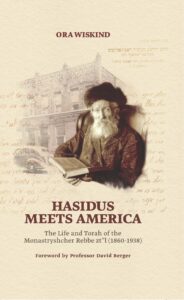 The Passover Haggadah
The Passover Haggadah
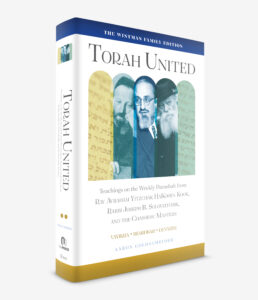 A Matter of Time
A Matter of Time